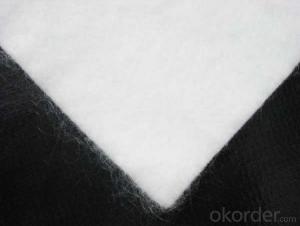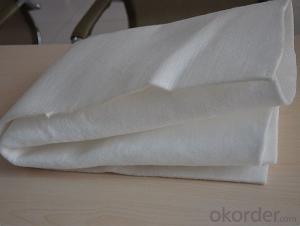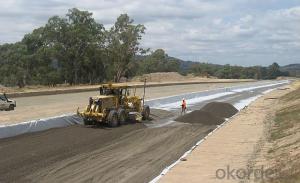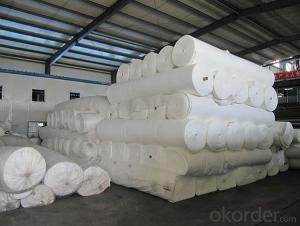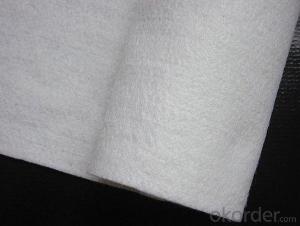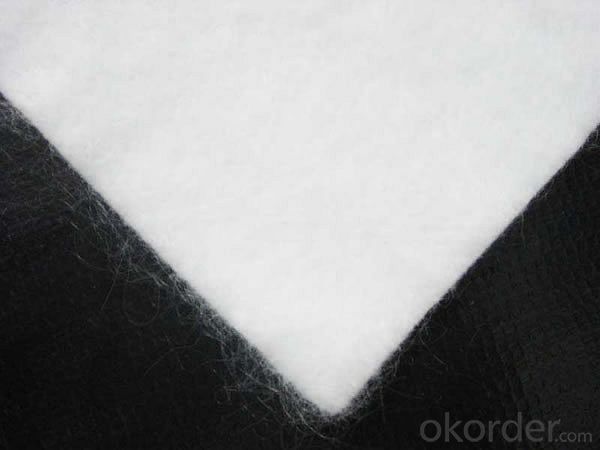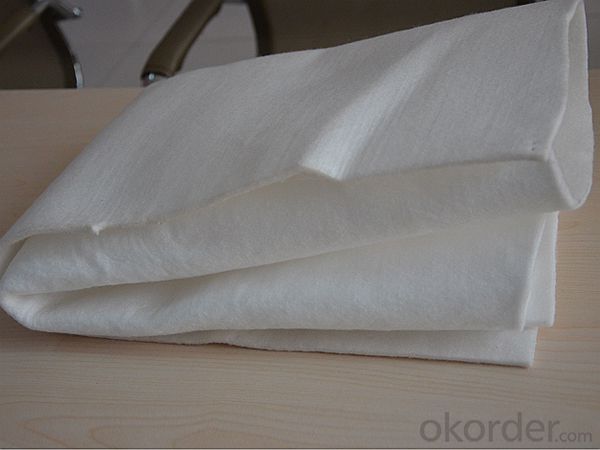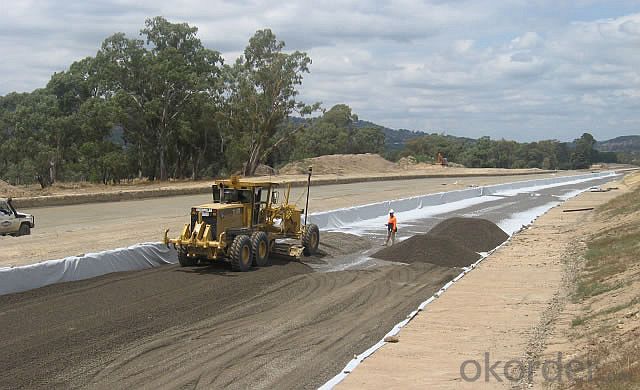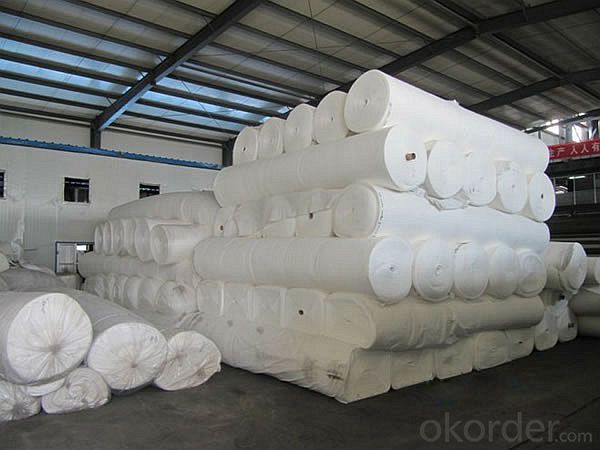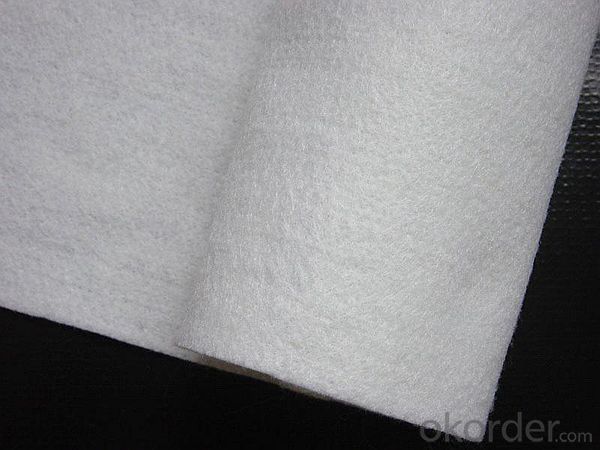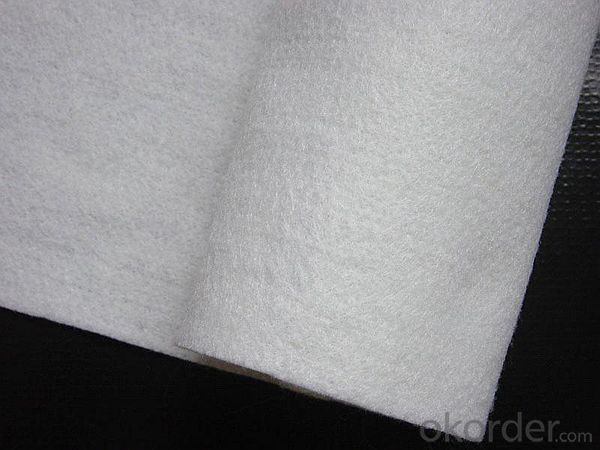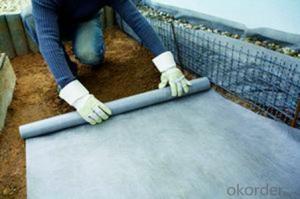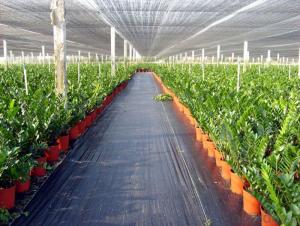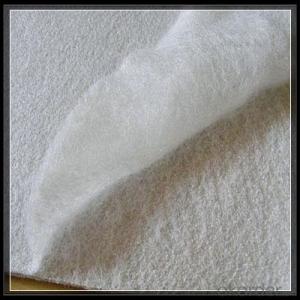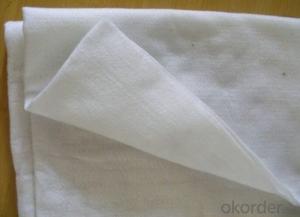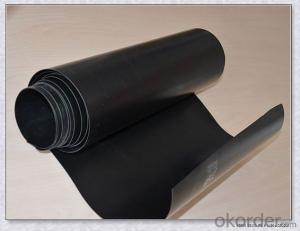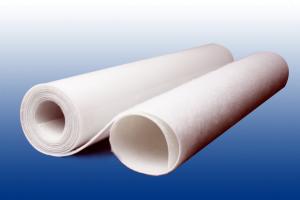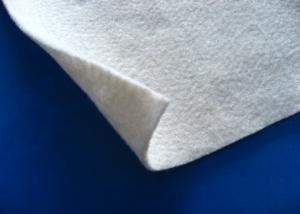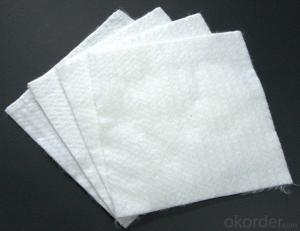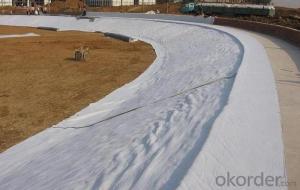Non-Woven Geotextile Filter Fabric with High Stabilization for Construction
- Loading Port:
- China main port
- Payment Terms:
- TT OR LC
- Min Order Qty:
- 1000 m²
- Supply Capability:
- 1000000 m²/month
OKorder Service Pledge
OKorder Financial Service
You Might Also Like
Specification
. Geotextile Specifications
1) Weight / Mass: 100g/m2-1500g/m2
2) Width: Within 8 m (1m-8m)
3) Length: 50m-100m/roll (as request)
4) Material: PP / PET
5) Color: Black , white , grey and other color
6) Certificate: CE/ISO9001 , ISO14001
7) Manufacturing method: nonwoven / woven
8) The Biggest geotextile manufacturer/factory in China for many years
Geotextile Functions
Separation
CNBM Geotextile acts as a separator between two layers of soil that have different
particle size distributions. CNBM Geotextiles are used to prevent road base materials from
penetrating into soft underlying sub grade soils, thus maintaining design thickness and
roadway integrity. Separators also help to prevent fine-grained sub grade soils from being
pumped into permeable granular road bases.
separation
Filtration
CNBM Geotextile acts similar to a sand filter by allowing water to move through the soil
while retaining all upstream soil particles. CNBM Geotextiles are used to prevent soils
from migrating into drainage aggregate or pipes while maintaining flow through the system.
TexoFib Geotextiles are also used below rip rap and other armour materials in coastal and
river bank protection systems to prevent soil erosion.
filtration
Reinforcement
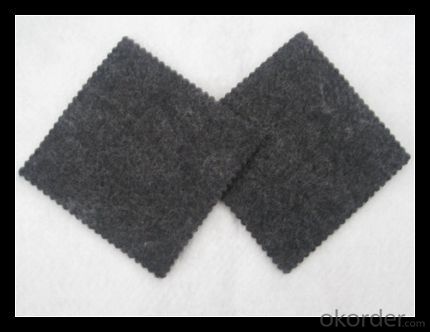
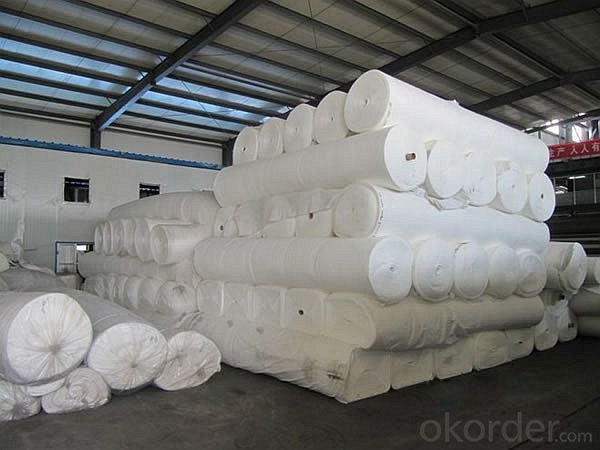
Packaging & Shipping
Packing: PLASTIC FILM INSIDE, AND WOVEN BAG OUTSIDE
Shipping: About 15 days after receipt the deposit
geotextile fabric
permeability,filtration,easy for construction
ISO and CE certificate
Good quality and competitive price
After-sales service
1.In order to provide customers with comprehensive technical support,we will provide technical and other related information upon request in a timely manner.
2.In required,we will appoint specialized technicians to the construction site to give technical trainings to construction people,and offer technical guidance throughout the whole construction process.
3.For damage due to shipment and delivery,after we receive the complaint,we will check the issure through provided pictures and videos.If our responsibility is confirmed,we wil offer free replacement.
4.When the construction is completed,as your request,our technical staff may participate in the final acceptance.
FAQ:
Q: What kind of payments does jenor support?
A: T/T, L/C, Cash are accepted.
Q: Do you charge for the samples?
A: Accordeing to our company policy, the samples are free, we only charge the freight fee. And we will return the freight fee during the next order.
Q: Can you produce according to customers' design?
A: Sure, we are professional manufacturer, OEM and ODM are both welcome.
Q: Do you have other products?
A: Yes, please check the pictures:
- Q: Are geotextiles commonly used in civil engineering projects?
- Yes, geotextiles are commonly used in civil engineering projects. They are versatile materials that provide various functions such as soil stabilization, erosion control, filtration, and drainage. Geotextiles are used in a wide range of civil engineering applications including road construction, slope stabilization, landfill liners, and coastal protection. Their ability to enhance the performance and longevity of infrastructure makes them a popular choice in civil engineering projects.
- Q: Production of geomembrane equipment which are such as the production of geotextile need to press machine, open charter, carding machine, etc.
- Mixing machine, screw extruder, heating die, circulating fan, traction machine, into a roll machine.
- Q: How do geotextiles assist in slope stabilization?
- Geotextiles assist in slope stabilization by providing reinforcement and erosion control. They are placed on the slope surface to distribute the stress and load more evenly, preventing soil erosion and slippage. Additionally, geotextiles help in promoting vegetation growth, further enhancing slope stability.
- Q: How to build a good geotextile sales team
- Any industry needs talent, geotextile sales staff do not need a high degree of education, can work hard on the line, I am specializing in the production of geotechnical materials, wish smooth
- Q: How are geotextiles affected by moisture content?
- Geotextiles can be affected by moisture content in several ways. When exposed to excessive moisture, geotextiles can lose their strength and integrity, leading to reduced performance and functionality. Excessive moisture can also cause geotextiles to become clogged or blocked, affecting their ability to drain water and maintain their permeability. Additionally, moisture content can impact the durability and lifespan of geotextiles, as it can contribute to the growth of microorganisms that can degrade the material. Therefore, it is crucial to consider moisture management when using geotextiles in various applications.
- Q: What are the key considerations for geotextile installation in high-altitude regions?
- Some key considerations for geotextile installation in high-altitude regions include extreme weather conditions, such as low temperatures and high winds, which can impact the performance and durability of the geotextile. The choice of materials should be carefully evaluated to ensure they can withstand these harsh conditions. Additionally, the installation process should account for the potential difficulties in accessing the high-altitude location and the need for specialized equipment and skilled labor. The design and placement of the geotextile should also take into account the unique geological and environmental characteristics of the area, such as steep slopes, rocky terrain, and increased risk of erosion. Regular monitoring and maintenance of the geotextile should be conducted to ensure its long-term effectiveness in high-altitude regions.
- Q: Geotextile what are the specifications of the ah?
- Geotextile is first divided into short wire geotextile and filament geotextile. Their specifications generally according to the weight to count, small equipment, geotextiles are mostly between 80g-380g, and now some mature domestic enterprises generally can do between 100g-1500g short wire and filament geotextile. How many grams of this can be customized between. It should be noted that the same specifications of the short wire geotextile price than the filament geotextile to 30% cheaper, but the technical strength index than the long geotextile cloth nearly 50%.
- Q: What are the advantages of using geotextiles in groundwater protection systems?
- Geotextiles offer numerous advantages in groundwater protection systems. Firstly, they act as a reliable barrier against soil erosion, preventing sedimentation and contamination of groundwater sources. Secondly, geotextiles provide effective filtration, allowing water to pass through while preventing the movement of fine particles and pollutants. Additionally, these materials enhance the stability of soil and provide reinforcement, reducing the risk of structural failures in groundwater protection systems. Lastly, geotextiles are durable, cost-effective, and easy to install, making them a practical choice for long-term groundwater protection.
- Q: Can geotextiles be used in oil and gas industry applications?
- Yes, geotextiles can be used in oil and gas industry applications. They are commonly used as a part of erosion control and sediment containment systems, providing stability and protection to the soil and preventing the migration of sediment into water bodies. Geotextiles can also be used in the construction of access roads, drilling pads, and pipeline trenches to improve their durability and reduce maintenance requirements.
- Q: Can geotextiles be used for erosion control in river levees?
- Yes, geotextiles can be used for erosion control in river levees. Geotextiles are specifically designed to stabilize soil and prevent erosion, making them an effective solution for reinforcing river levees and protecting them from erosion caused by water flow.
Send your message to us
Non-Woven Geotextile Filter Fabric with High Stabilization for Construction
- Loading Port:
- China main port
- Payment Terms:
- TT OR LC
- Min Order Qty:
- 1000 m²
- Supply Capability:
- 1000000 m²/month
OKorder Service Pledge
OKorder Financial Service
Similar products
Hot products
Hot Searches
Related keywords
